The Gigabyte GeForce RTX 4060 GAMING OC 8G stands as Gigabyte’s second most premium offering within the GeForce RTX 4060 series of graphics cards. Sporting a trio of fans, the design choice might raise eyebrows considering the card’s moderate power profile, leading to relatively subdued heat generation. Notably compact in size, the card’s fans appear oddly diminutive in relation. To exact dimensions, the fans have a 7.5 cm diameter, a deliberate reduction from prior versions.
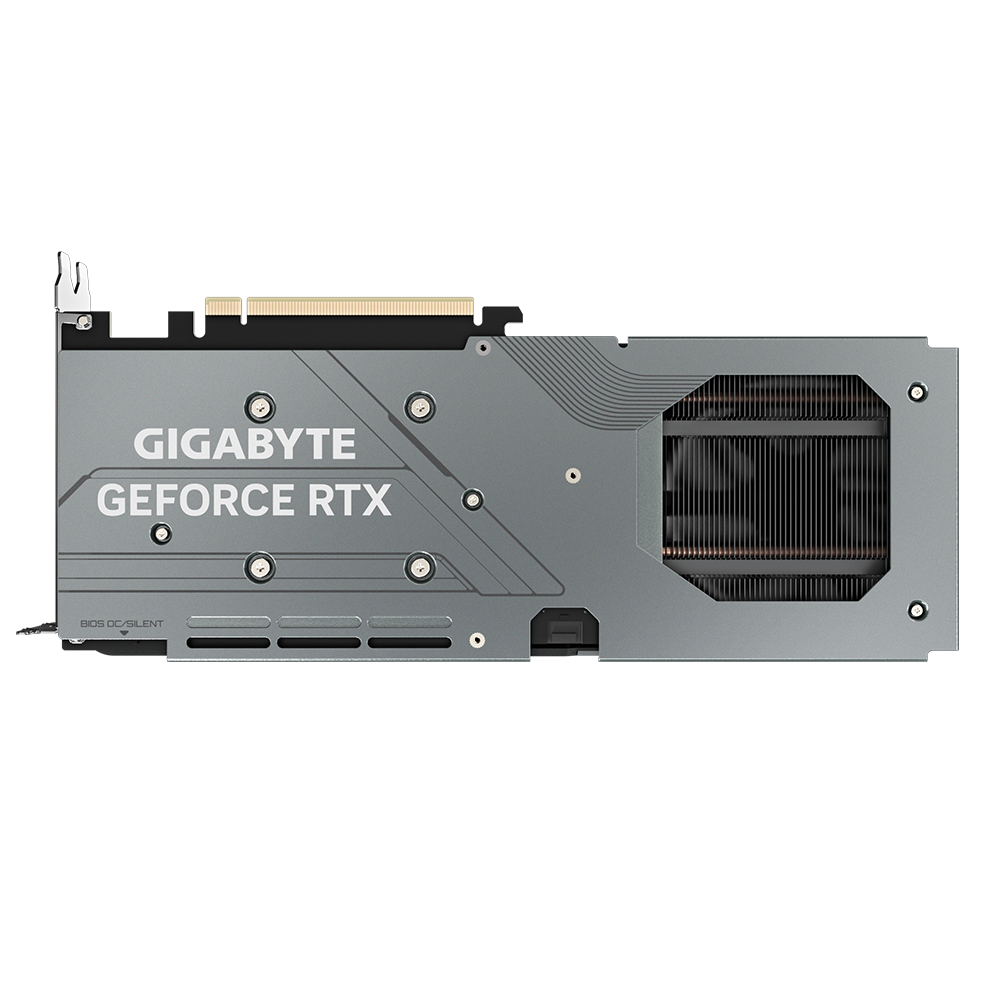
Gigabyte GeForce RTX 4060 Pricing and Resolution Focus
At the time of assessment, the price for the Gigabyte GeForce RTX 4060 GAMING OC 8G rests at $319.99, a considerable figure for a graphics card that Nvidia itself has touted as optimal for 1080p resolution gaming.
Form Factor and Performance Specifications
Physically, the Gigabyte GeForce RTX 4060 GAMING OC 8G takes a rather unassuming form, requiring the space of two expansion slots in height, and measuring 281 mm in length. Beneath its exterior, the GeForce RTX 4060 houses 3072 CUDA cores, accompanied by 8 GB of GDDR6 video memory on a 128-bit bandwidth, with power supplied through a sole 8-pin cable. For proper operation, Gigabyte stipulates the use of a 450W power supply.
Construction and Cooling Efficiency
The construction enveloping the fans, along with its adjacent components, is rendered in plastic, while the upper portion (when slotted into a computer) adopts a metal composition, albeit notably thin. Cooling capabilities are commendable given the card’s power, although it does fall behind the standards set by its predecessors within the GeForce RTX 40 Series. The package exclusively contains the graphics card itself, with no additional inclusions.
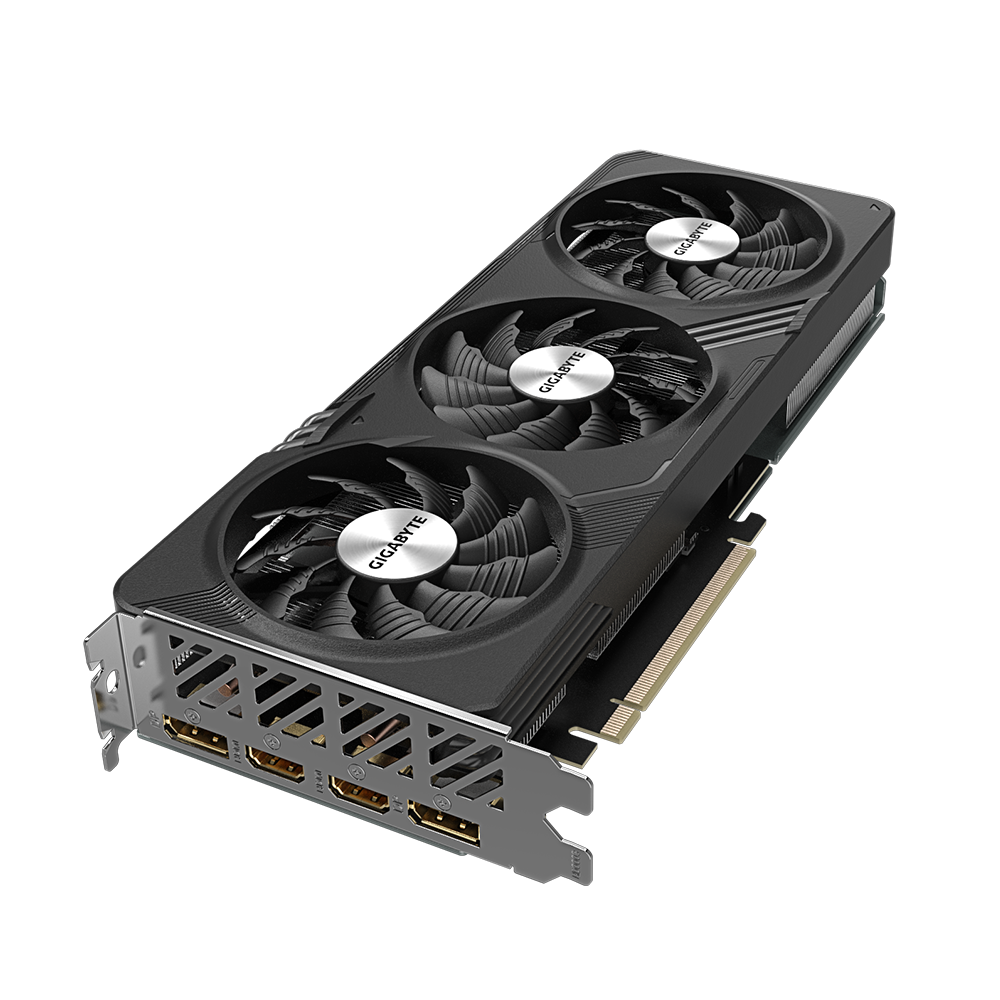
Illumination and Control
A touch of RGB FUSION lighting is also present on the graphics card, situated near the logo. Adjustment of its functionality is facilitated by the Gigabyte Control Center software.
Please follow us on Facebook and Twitter.
Gigabyte GeForce RTX 4060 Performance Analysis
GeForce RTX 4060 for 1080p and 1440p Gaming
Nvidia prominently markets the GeForce RTX 4060 video cards for gaming at 1080p and 1440p resolutions, augmented by DLSS enhancements. With this in mind, 4K testing isn’t pursued further, as running demanding games at this resolution with a GeForce RTX 4060 is an inadvisable choice.
Hardware Configuration
The hardware configuration for testing comprises the following components:
Motherboard: Gigabyte Z790 AORUS ELITE (with F3 BIOS version)
Processor: Intel Core i9-13900K
Processor Cooler: Fractal Design Celsius+ S36 Dynamic AIO
Video Card: Gigabyte GeForce RTX 4060 GAMING OC 8G
RAM: G. SKILL Trident Z5 RGB Black DDR5 32GB 5600MHz CL36 Kit of 2
Memory: Samsung 990 PRO PCIe 4.0 SSD
Power Supply Unit: Xilence Performance X 1050W, 80+ Gold
Computer Case: Fractal Design Meshify 2 XL
Operating System: Windows 11 64-bit (2022H2 update)
Nvidia GeForce Game Ready Driver: WHQL 536.67 (released 18.07.2023)
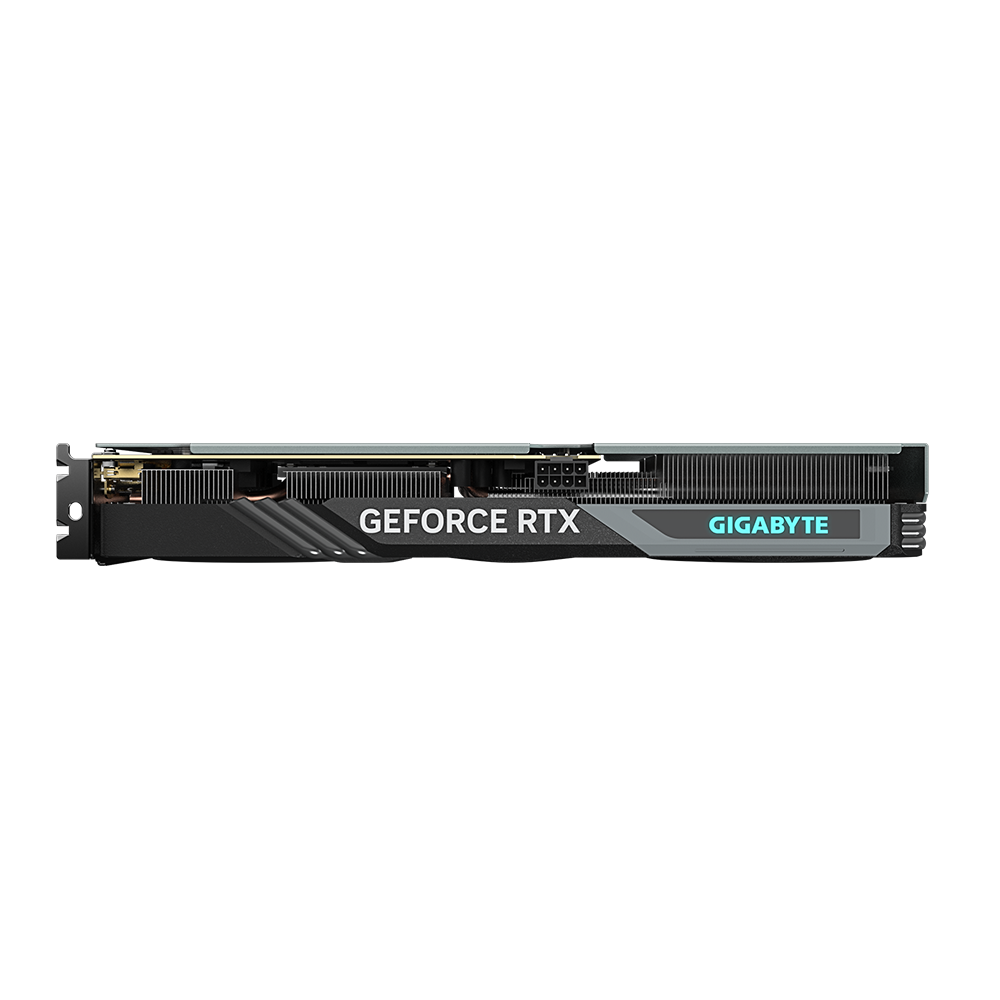
Testing Approach
The testing approach involves synthetic benchmarks to facilitate clear comparisons across various video cards. Additionally, the performance of the Gigabyte GeForce RTX 4060 GAMING OC 8G is measured in terms of frames per second (fps) across popular games, shedding light on its gaming capabilities.
Performance Comparison
The Gigabyte GeForce RTX 4060 GAMING OC 8G displays somewhat lackluster and occasionally subpar performance, placing it below the Intel Arc A750 in specific scenarios and sometimes on par with Nvidia’s two generations older graphics cards.
Game Performance Testing
Transitioning to game performance, several contemporary titles are tested, measuring fps across 1080p and 1440p resolutions. 4K testing is omitted in line with Nvidia’s indication that this card isn’t tailored for 4K gaming. DirectX 12 is utilized, fps limiters and Vsync are deactivated, and games are run at the highest graphic settings in full-screen mode. Initial tests are conducted without ray tracing and DLSS to allow direct comparison between video cards. If a card supports these features, their impact on fps is also scrutinized.
FPS Benchmarks Scale
Regarding fps benchmarks, the following scale is employed:
Below 30 fps: Suboptimal gameplay
30-40 fps: Mediocre gameplay
40-60 fps: Acceptable gaming experience
Above 60 fps: Very smooth gaming
Individual Game Performance Gigabyte GeForce RTX 4060
Testing commences with the World of Tanks enCore drive test, showcasing the GeForce RTX 4060’s commendable performance at 1080p resolution. In Shadow of the Tomb Raider, the GeForce RTX 4060 outperforms expectations, surpassing even the RTX 3090 at 1080p resolution. However, this might be attributed to driver optimizations, considering the game’s age.
Assassin’s Creed Odyssey places the GeForce RTX 4060 beneath the GeForce RTX 4060 Ti model and alongside the previous-generation RTX 3070, a logical positioning. At 1440p resolution, the card nears the 60 fps threshold. In Far Cry: New Dawn, the GeForce RTX 4060 fares well at both 1080p and 1440p resolutions, indicating playable performance.
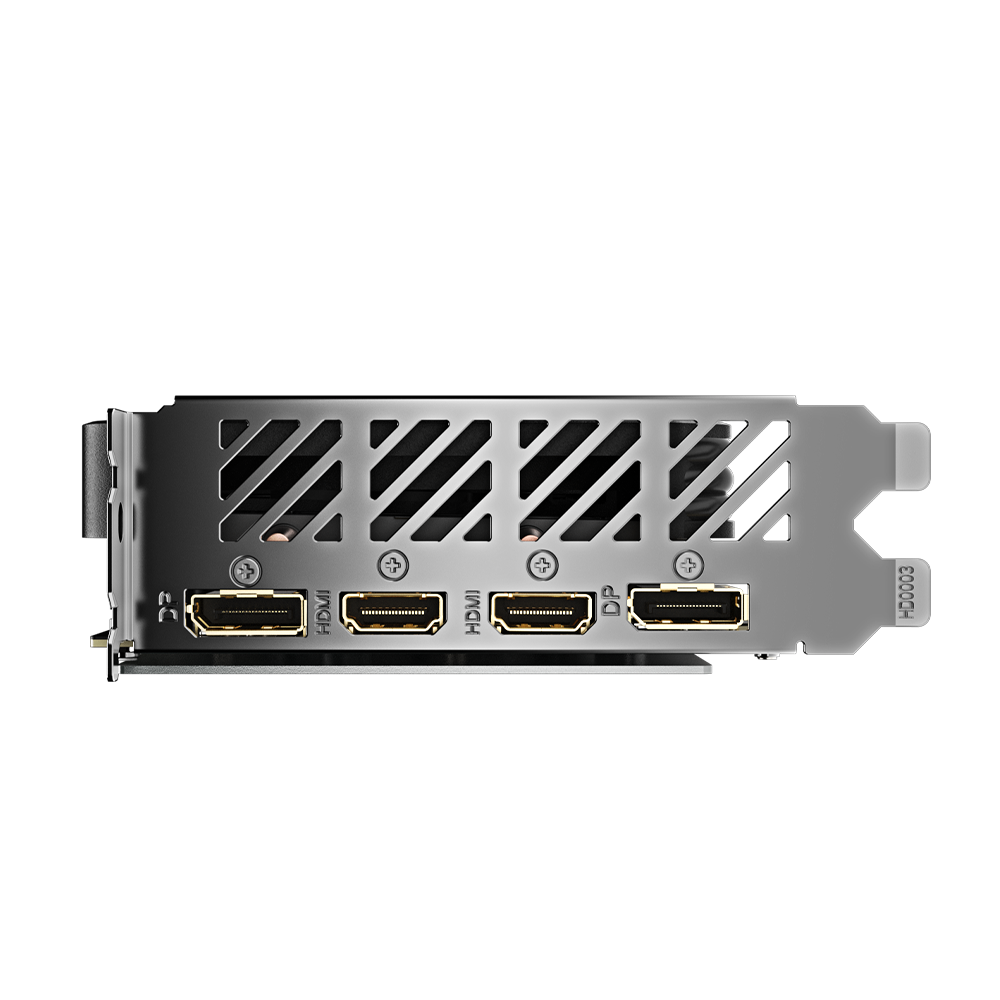
Ray Tracing and DLSS Performance
Ray tracing and DLSS testing demonstrates that while ray tracing adds visual appeal, it also imposes a computational load that can hamper fps. Nvidia’s DLSS, particularly the third iteration, mitigates this by utilizing AI to enhance frame generation speed. Notably, the GeForce RTX 4060 relies heavily on DLSS and frame-by-frame rendering, albeit this can occasionally introduce latency. The limitations of DLSS should also be acknowledged.
DLSS Testing Results Gigabyte GeForce RTX 4060
The synthetic DLSS test from 3DMark highlights the benefit of DLSS usage, especially in high resolutions. The Shadow of the Tomb Raider DLSS test further underscores DLSS as a performance-enhancing tool, albeit with somewhat subdued gains. Notably, DLSS 3 isn’t supported in Shadow of the Tomb Raider.
In summary, the Gigabyte GeForce RTX 4060 GAMING OC 8G showcases capable performance in 1080p and 1440p gaming scenarios, leveraging DLSS for smoother experiences. Nonetheless, its suitability for 4K gaming remains questionable. The card’s placement in relation to other models underscores its position in the market.
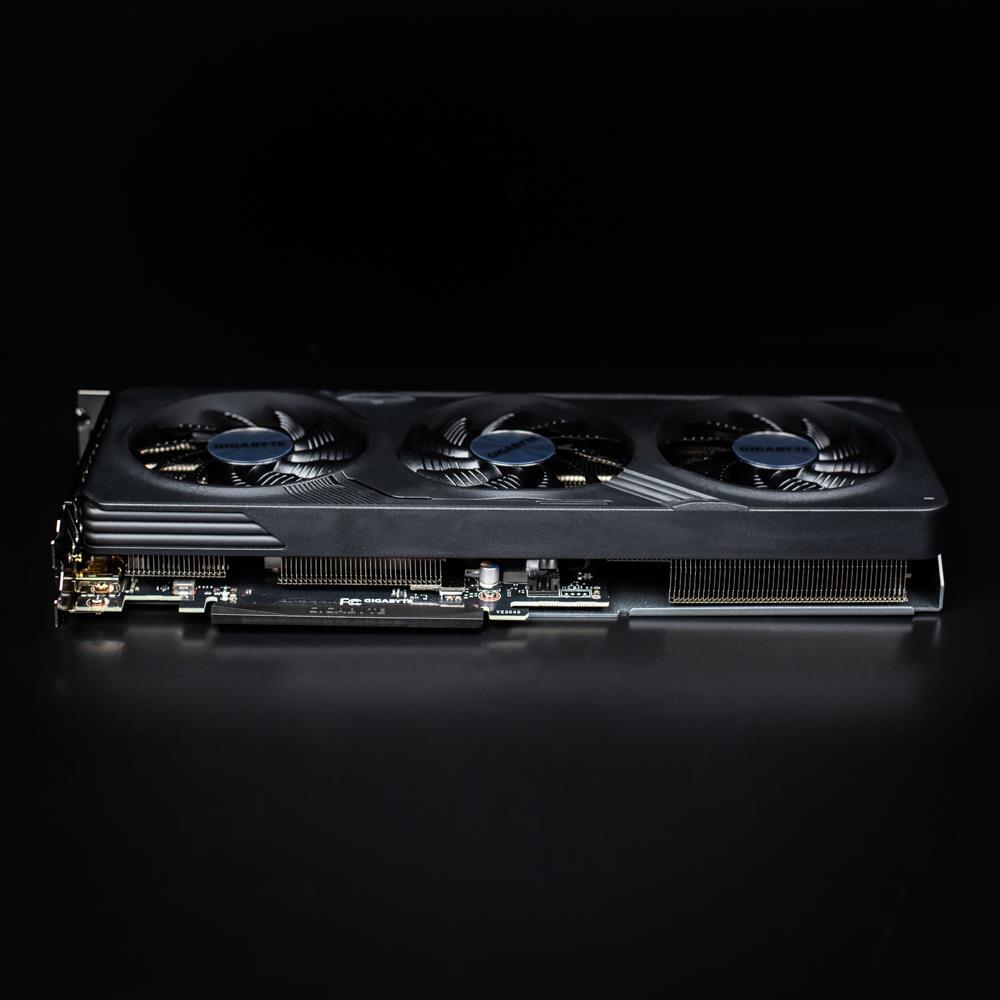
Gigabyte GeForce RTX 4060 Review Conclusion
Compact and Appealing Graphics Card with Pricing Concerns
In conclusion, the Gigabyte GeForce RTX 4060 GAMING OC 8G emerges as a compact and appealing graphics card, which, at least during the review composition, commands an almost $319.99 price tag. A considerable sum, one might argue. The pricing strategy adopted by Nvidia and its associated manufacturing partners leaves much to be desired. Meanwhile, reports suggest that Nvidia intends to take measures to dissuade these partners from simultaneously producing Intel’s forthcoming second-generation Battlemage video cards alongside Nvidia’s own models. This claim appears rather dubious.
Performance and Comparison
Positioned predictably below the Gigabyte GeForce RTX 4060 Ti GAMING OC 8G variant, the Gigabyte GeForce RTX 4060 GAMING OC 8G performs well in relative comparison. However, it’s worth noting that in certain games, the GeForce RTX 4060 lags significantly behind video cards from two previous generations.
Coil Whine Concerns
The specific unit of the Gigabyte GeForce RTX 4060 GAMING OC 8G provided for review exhibited coil whine under load. The noise was rather conspicuous, though one might speculate that it could be an isolated issue with that particular graphics card.
Gigabyte GeForce RTX 4060 DLSS 3 and Gaming Performance
Prospective buyers of the GeForce RTX 4060 can anticipate commendable 1080p gaming performance, with Nvidia’s dedicated efforts on DLSS 3 bearing fruit. However, it’s crucial to underline that the efficacy of DLSS 3 hinges on its integration into the game itself. Regrettably, the roster of titles supporting DLSS 3 remains limited, whereas DLSS 2 boasts greater availability. In essence, even a last-generation GeForce RTX graphics card would suffice.





